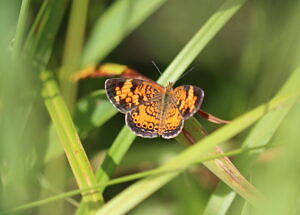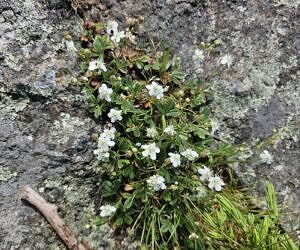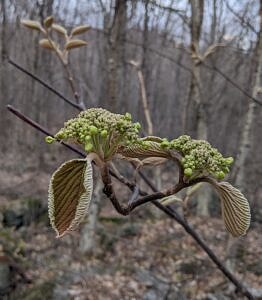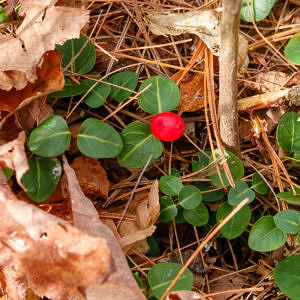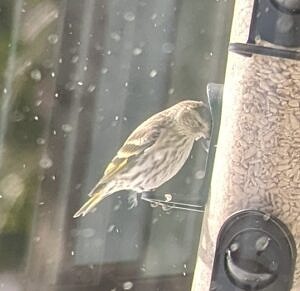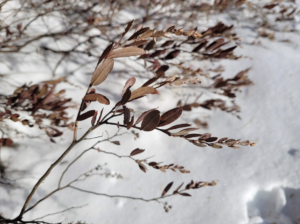The Monadnock Region is home to a fantastic array of organisms, from the smallest of insects to massive trees, long-lived turtles, and migrating raptors. On this page, we’ll feature some of the most interesting photo observations from the SuperSanctuary Biodiversity project on iNaturalist.
Crescents (Genus Phyciodes)
July 20, 2024 | Harris Center Headquarters
The identification of pearl and Northern crescents is highly disputed and not fully understood, but one thing that is not disputed is their beauty! These small butterflies have burnt-orange wings with variable black patterns reminiscent of Rorschach inkblots. Although they utilize a broad array of flowers for nectar, they only lay their eggs on asters. @slamonde observed this crescent at the Harris Center during our SuperSanctuary Butterfly Count in mid-July, but you can find butterflies fluttering about in the Harris Center meadow and pollinator garden on any sunny day in July or August.
Three-toothed Cinquefoil (Sibbaldiopsis tridentata)
June 5, 2024 | West Side Trails
Three-toothed cinquefoil tucks itself into the cracks of sunny, exposed bedrock. If you’re seeing this plant, you are likely somewhere with a nice view! @bobh340 observed this plant on our West Side Trails. This species is small but showy at nearly all times of year, with a long flowering period from June to August and evergreen leaves that turn scarlet-red in the fall and winter. Two great locations to see three-toothed cinquefoil in the SuperSanctuary are Mount Skatutakee and Mount Thumb. While you’re there, be sure to check out the view.
Poison Ivy (Toxicodendron radicans)
May 15, 2024 | Harris Center Headquarters
The growing season has begun, and it’s a good time for us all to brush up on our poison ivy identification! Look for plants with three-parted, irregularly-toothed, mitten-shaped leaves, as well as a glistening sheen. That sheen is created by urushiol, the oil that causes most of us to get itchy rashes after touching this infamous plant. @chloe608 daringly collected this observation in one of the fields near the Harris Center building. Her observation is also a reminder that all is not lost if you are exposed to poison ivy while collecting important community science data! As with any oil, warm water and strong detergents like dish soap can wash the urushiol off before an allergic reaction occurs.
Hobblebush (Viburnum lantanoides)
April 20, 2024 | West Side Trails
A common plant of the forest understory in our area, hobblebush gets its start in early spring when most other woodland shrubs remain leafless and brown. @natemarchessault spotted this plant with leaves unfurling and flower buds forming on our West Side Trails. The outer buds will grow into larger, sterile flowers that never fruit – and may only serve to attract insect pollinators to the central cluster of smaller flowers, which will produce bright red berries in late summer and early fall.
Partridgeberry (Mitchella repens)
March 19, 2024 | Hiroshi Land
As a sprawling shrub with tiny, nondescript leaves, partridgeberry would be easy to overlook if it weren’t for its vibrant red berries. Each fruit develops from the fused ovaries of its paired flowers, so two flowers were involved in creating every berry you see. @tmomeyer spotted this plant with fruit on our Hiroshi Land, and while the fruit looks fresh and ripe, it has actually persisted over the winter and likely first developed last August!
Pine Siskin (Spinus pinus)
February 16, 2024 | Harris Center Headquarters
The bird feeders at the Harris Center Headquarters can be a fantastic place to observe songbirds at close range from the comfort of the Windows Room. This Pine Siskin was observed by @natemarchessault during one of two Harris Center outings in celebration of The Cornell Lab and National Audubon’s Great Backyard Bird Count! Pine Siskins are an irruptive finch species similar in size and shape to American Goldfinches but can be distinguished by their streaky breasts and yellow wash to their outer flight feathers.
Leatherleaf (Chamaedaphne calyculata)
January 21, 2024 | West Side Trails
Late winter, when wetlands have frozen over, can be an excellent time to observe perennial wetland plants, such as this leatherleaf documented by @stevetobin at Jack’s Pond on the Thumbs Down Trail in Hancock. This species is in the family Ericaceae and shares the same bell-shaped flowers as blueberries in the summer. Leatherleaf retains its bronze, leathery leaves in winter, forming hummocks on peat along marshes, ponds, and streams.
Contact Us
For more information about using iNaturalist in the SuperSanctuary, please contact our staff ecologist Nate Marchessault at (603) 525-3394 or by email.
